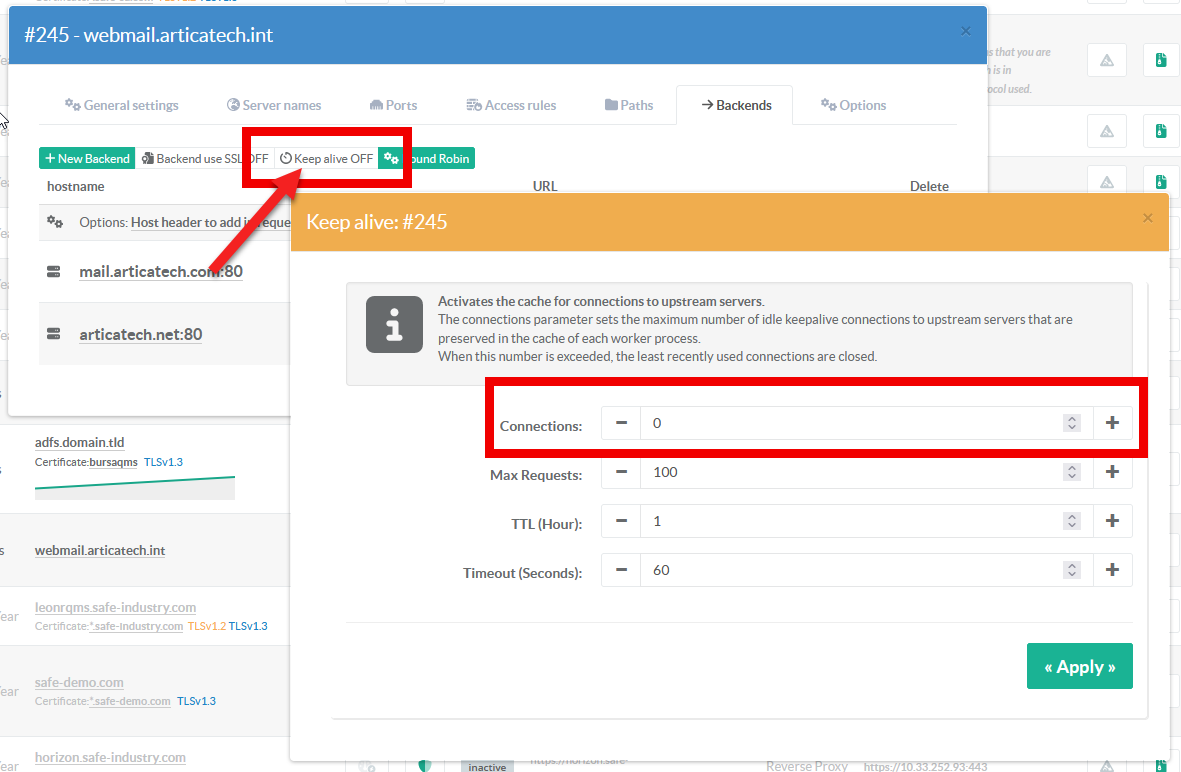Its benefits are primarily observed in reducing connection overhead, improving request latency, and enhancing overall server resource utilization
¶ Feature benefits
¶ Reduced Connection Overhead
- TCP Handshakes: Establishing a new TCP connection for each HTTP request involves a three-way handshake, which introduces latency and consumes additional resources.
By using keepalive, TCP connections can be reused for multiple requests, minimizing the handshake overhead. - TLS/SSL Handshakes:
For HTTPS connections, the handshake process is even more resource-intensive due to the cryptographic operations required.
Keepalive allows the reuse of TLS/SSL sessions, significantly reducing the computational overhead and latency associated with establishing secure connections.
¶ Improved Latency
- Faster Resource Loading: Reusing connections allows subsequent HTTP requests to bypass the connection establishment phase, resulting in faster loading times for web pages, especially those with numerous resources (images, scripts, stylesheets, etc.).
- Persistent Connections: HTTP/1.1 and HTTP/2 support persistent connections, which are effectively utilized through keepalive, allowing multiple requests and responses to be sent over the same connection without waiting for each to complete in turn.
¶ Enhanced Resource Utilization
- Reduced Server Load: By maintaining a pool of open connections, the reverse-proxy can more efficiently manage its connections to backend servers, leading to reduced CPU and memory usage associated with opening and closing connections.
- Connection Pooling: The keepalive feature allows the reverse-porxy to maintain a pool of connections that can be reused for different requests, enhancing the utilization of server resources and improving the capacity to handle high loads.
¶ Better Network Utilization
- Reduced Network Congestion: Minimizing the number of new connections reduces the overall volume of TCP and TLS handshake data on the network, contributing to less congestion and better utilization of available network bandwidth.
¶ Enable the Keep alive feature
On the backends section click on the little button “Keep alive [OFF]"

- Connections: Specifies the number of idle keepalive connections to backends that remain open for each worker process.
If 0, then the Keep Alive feature is disabled.
- Max requests: This option defines the maximum number of requests that can be sent over a single keep alive connection before the connection is closed by the reverse-proxy.
Limiting the number of requests per connection can help in mitigating potential performance degradation over time and managing reverse-proxy resources more effectively.
- TTL: Limits the maximum of time requests can be processed by a single connection.
Once this time limit has been reached, the connection is closed after the next request has been processed.
- Timeout: This option specifies the maximum time (in seconds ) that a keep alive (persistent) connection will remain open after passing a request to the backend but without receiving another request.
Once this timeout expires, the reverse-proxy closes the connection.
This parameter can help manage reverse-proxy resources by limiting how long idle connections stay open.